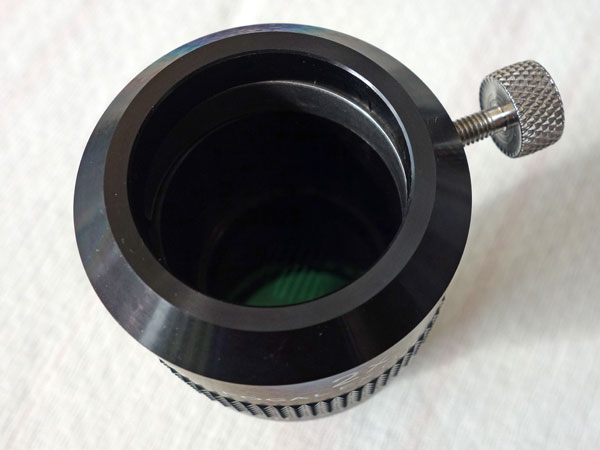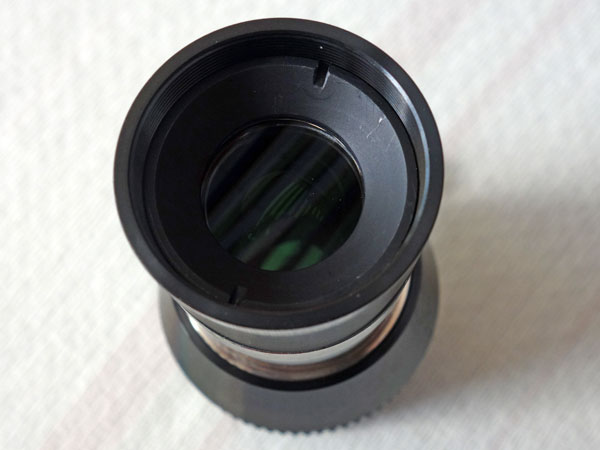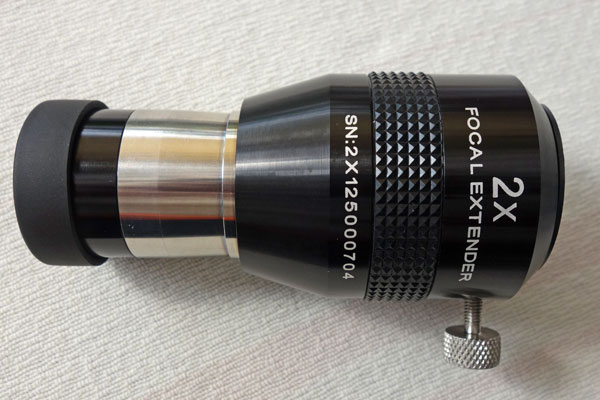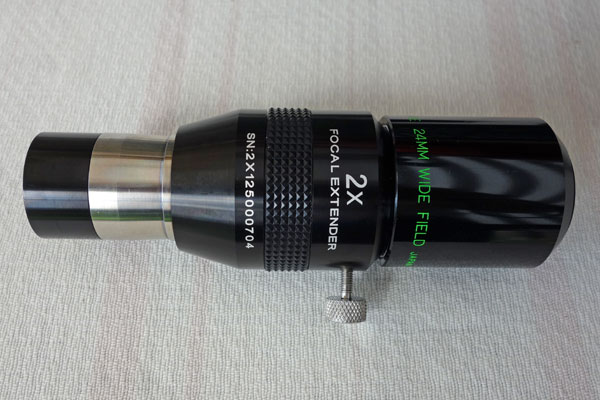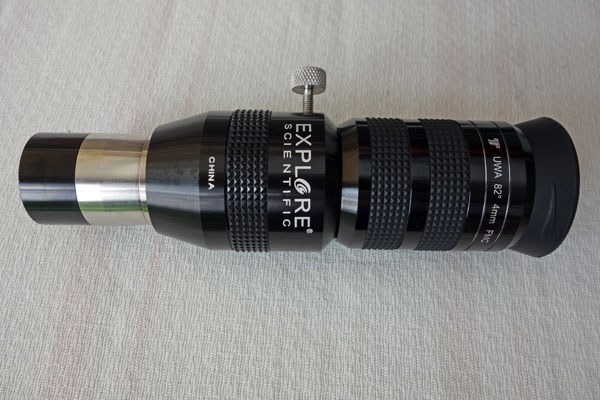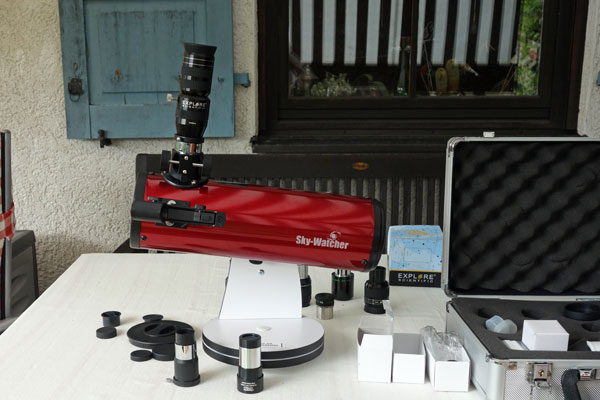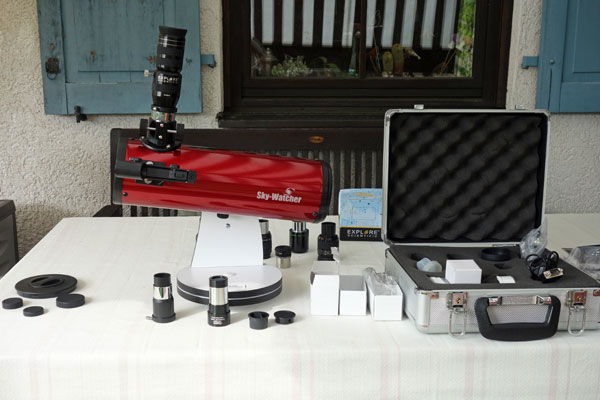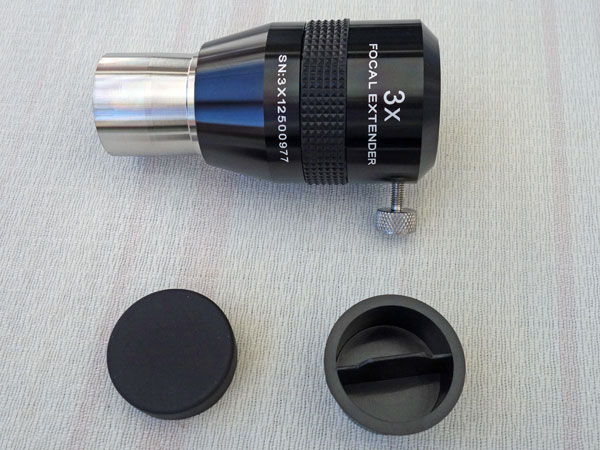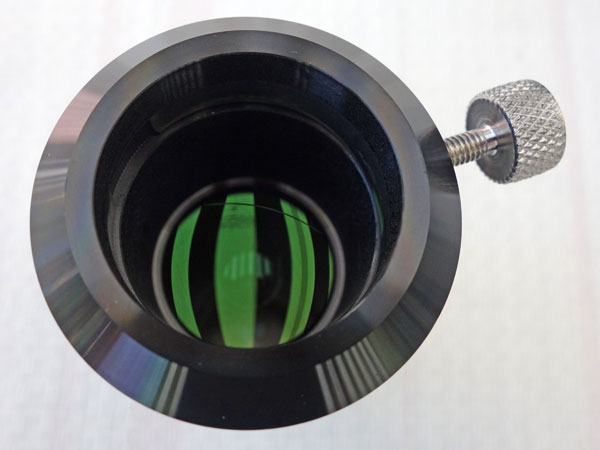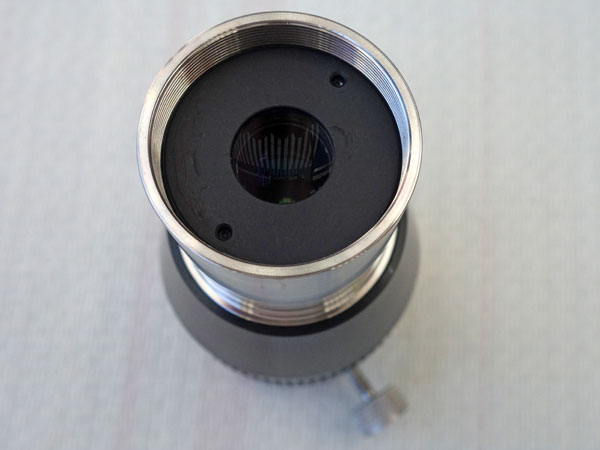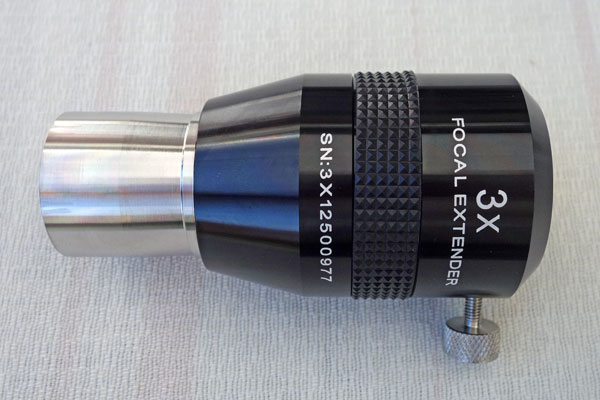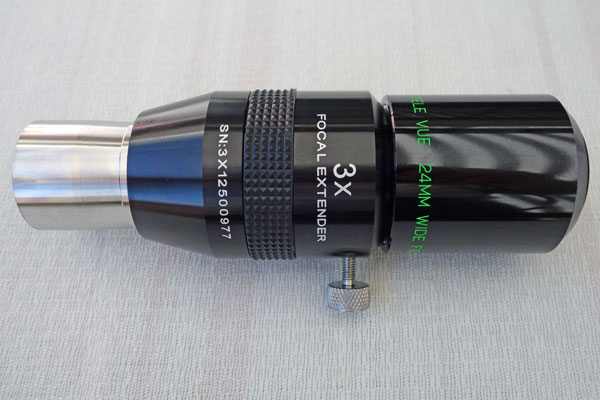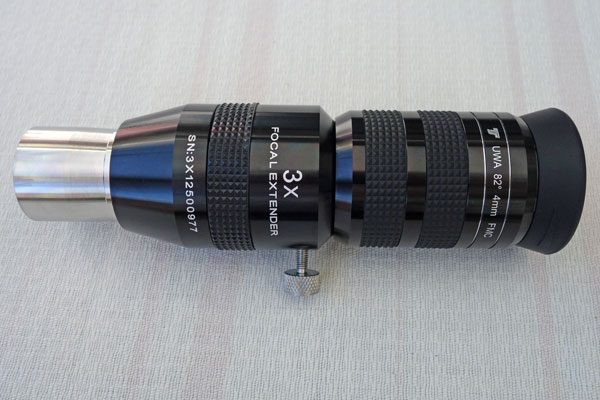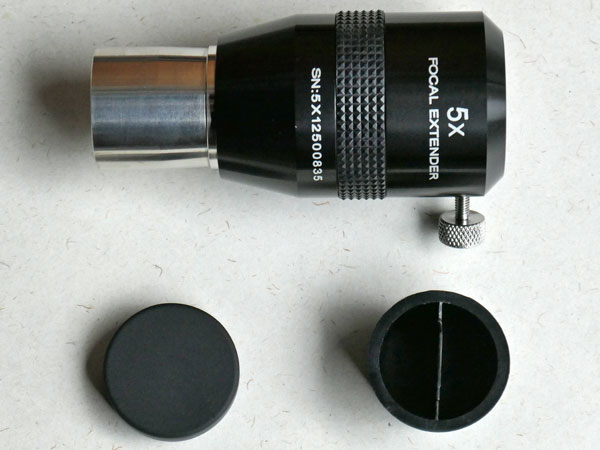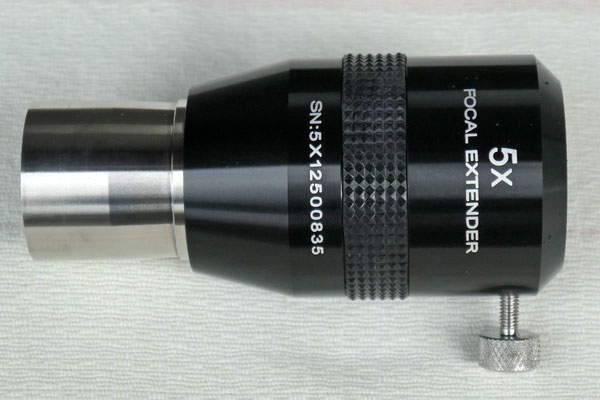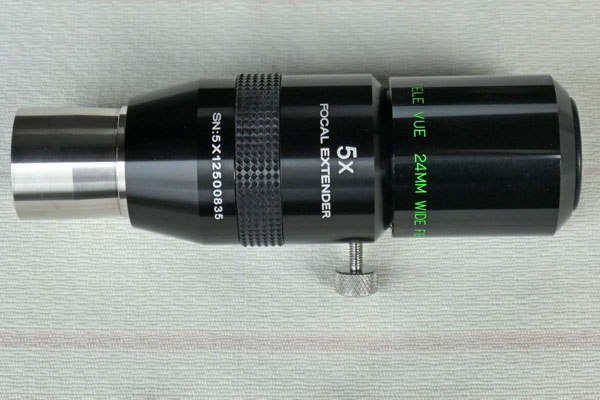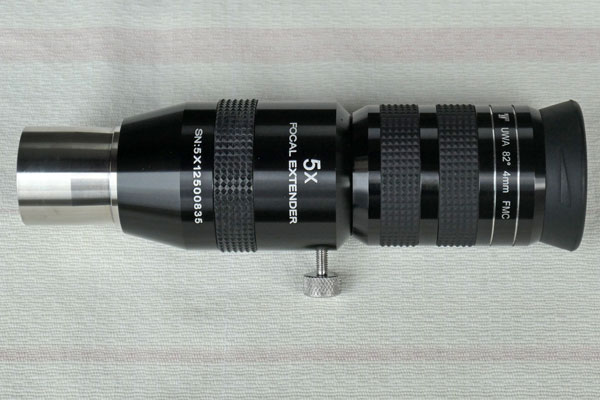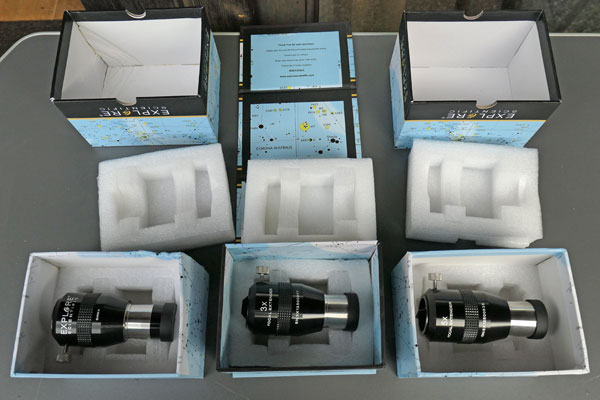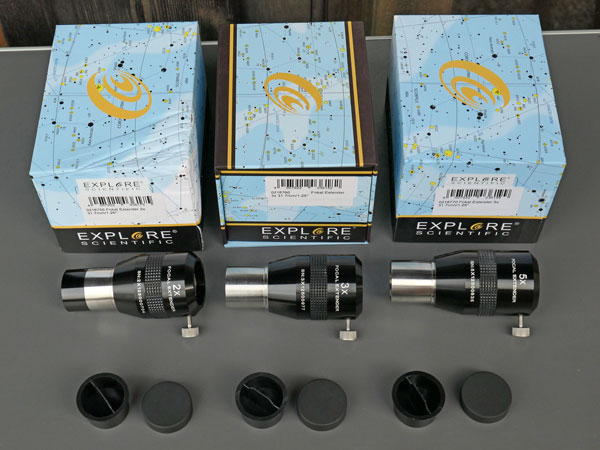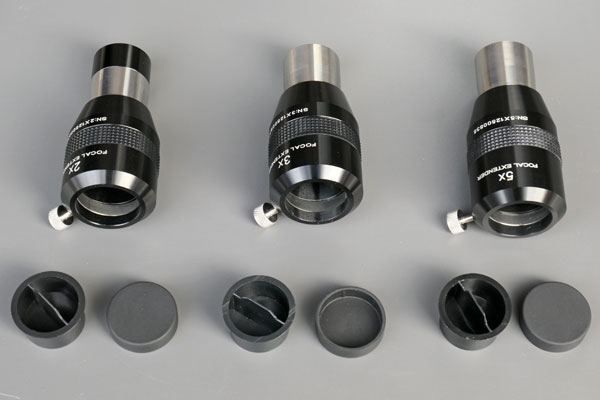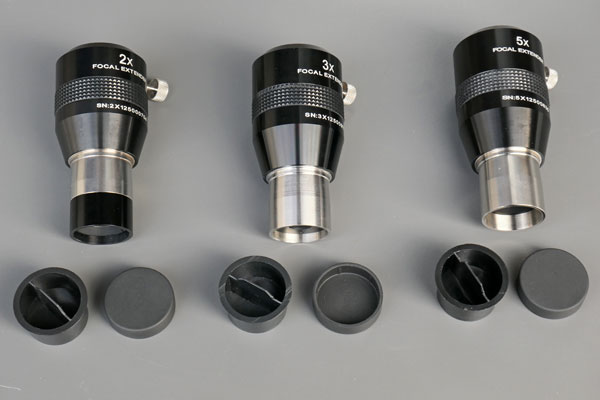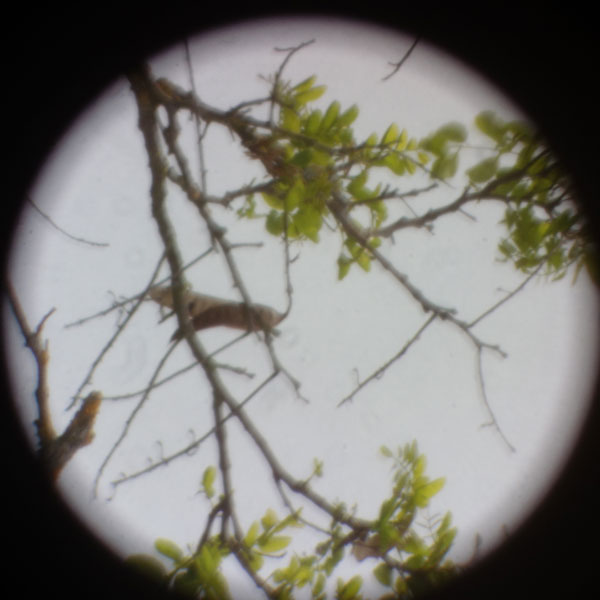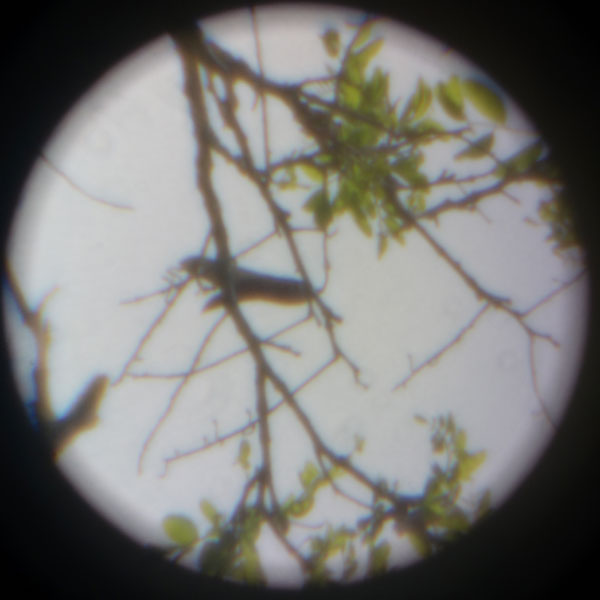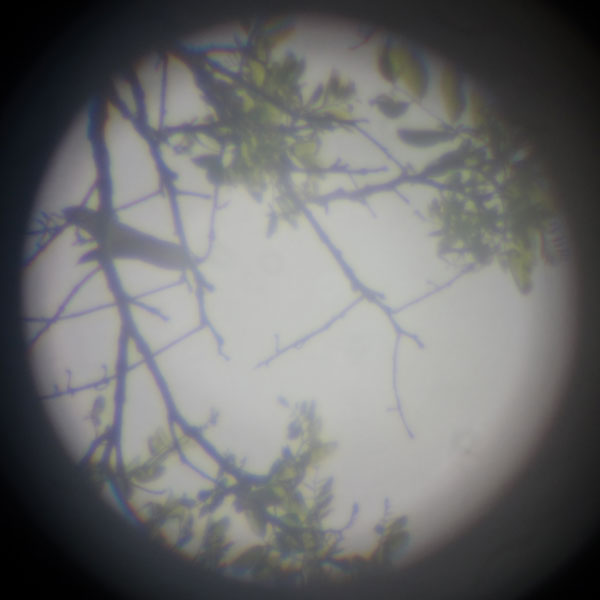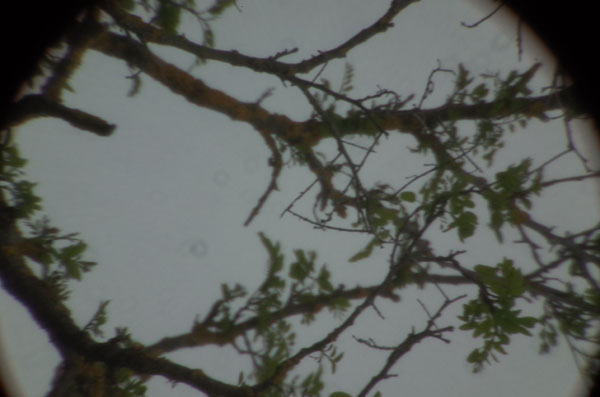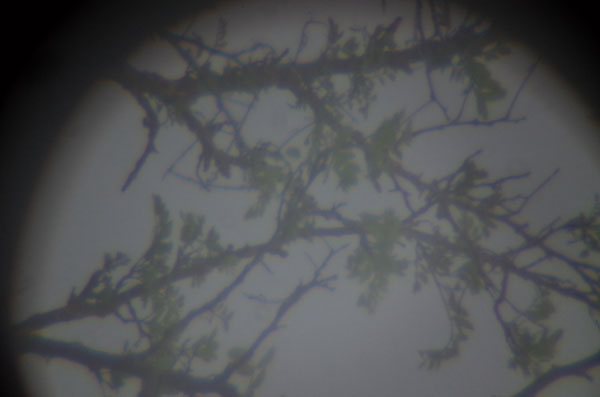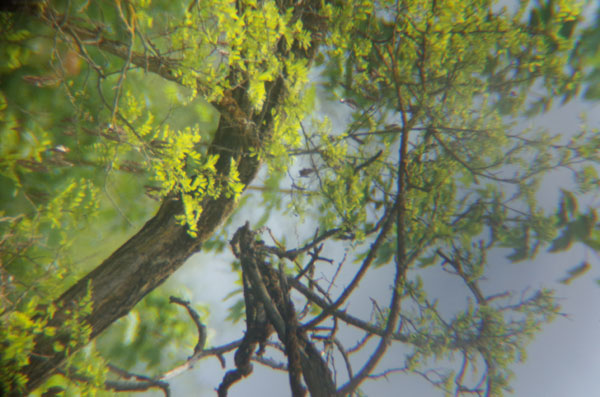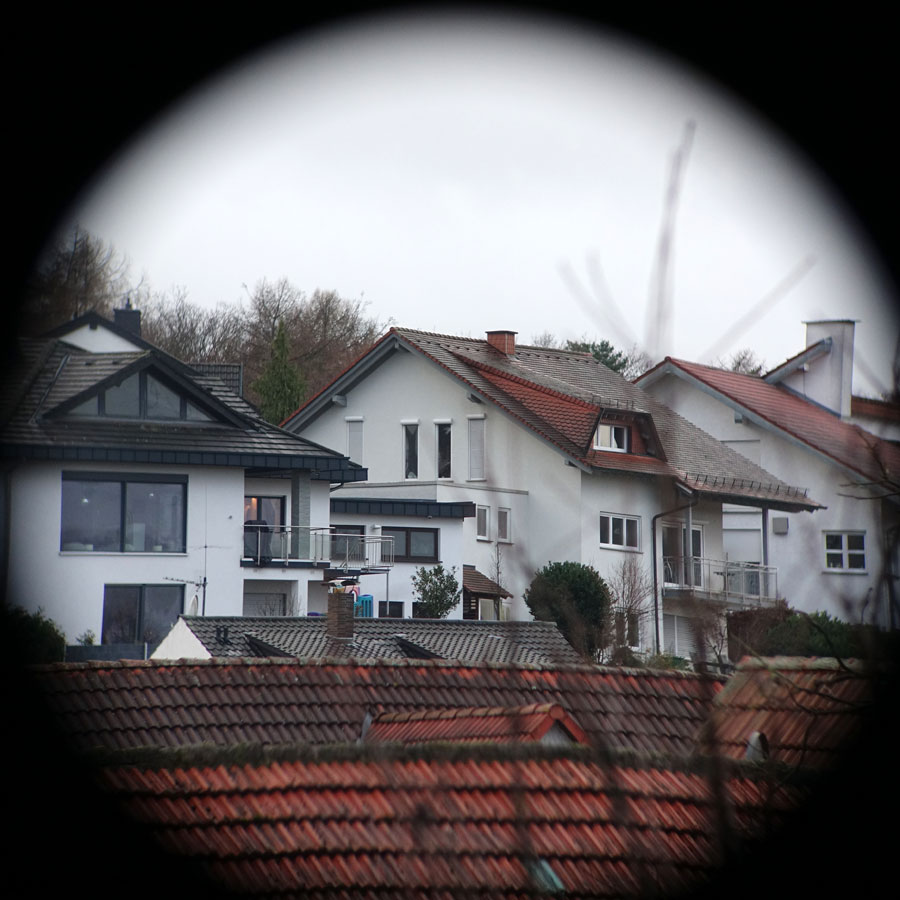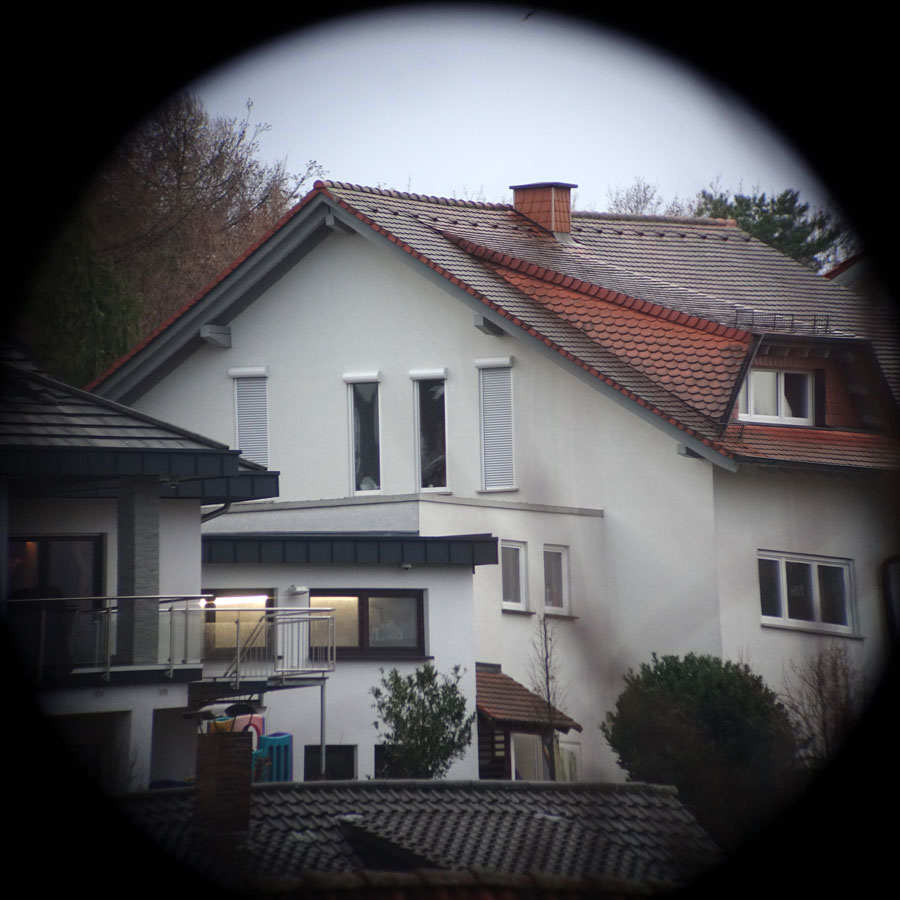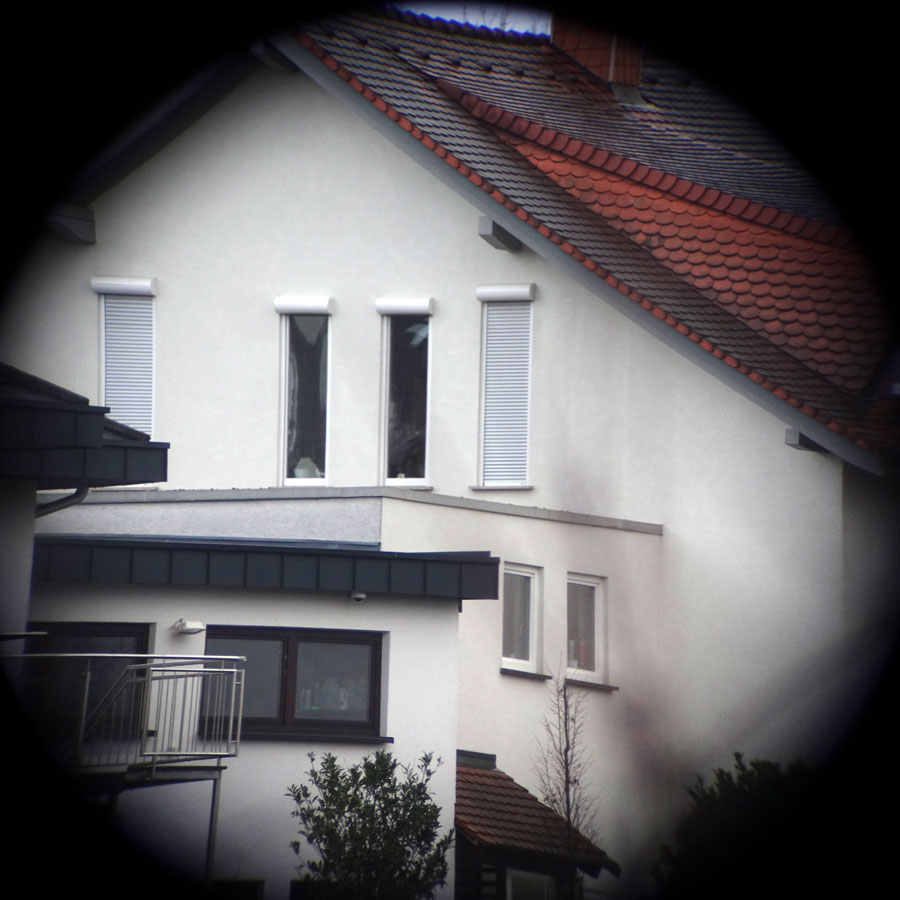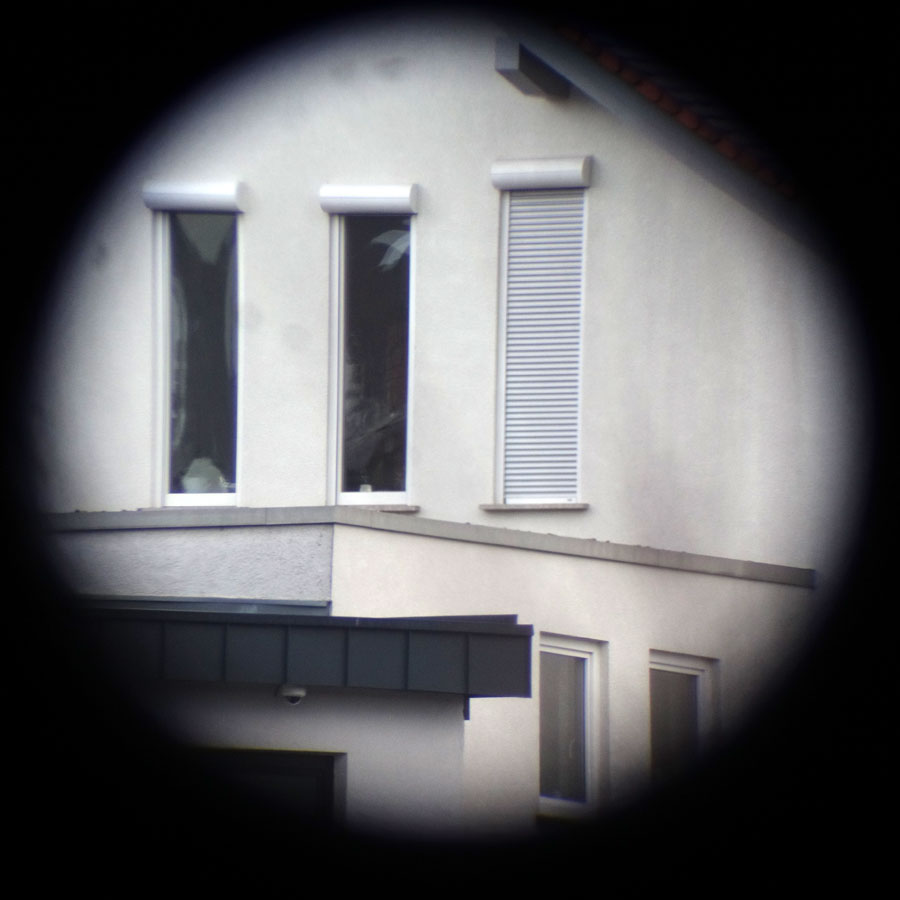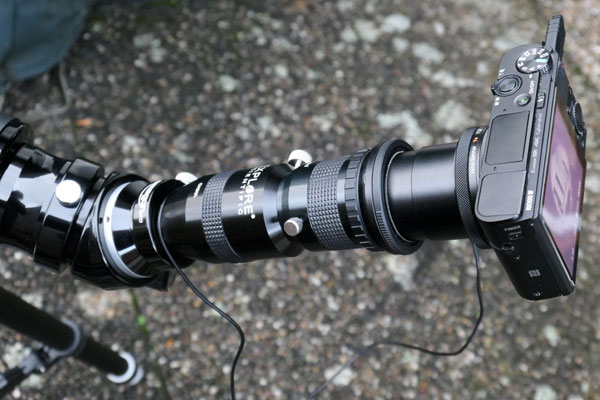Explore Scientific Focal Extenders 2 x, 3 x, and 5 x
Introduction | Look (2 x Extender) | Look (3 x Extender) | Look (5 x Extender) | Look (all Extenders) | Eyepiece Data without and with Focal Extenders | First Experiences | First Conclusions | References
Archive
On this page, I present my former Explore Scientific Focal Extenders (Tele Extenders) 2 x, 3 x, and 5 x (1,25") - as well as first experiences that I have collected when using them.
Note: I sold my all my three Explore Scientific Focal Extenders in November and December 2022. I therefore can no longer report any experiences with these focal extenders. |
Introduction
Many inexpensive telescopes come equipped with a 2 x or 3 x Barlow lens, which makes it possible to virtually "double" the number of eyepieces. Using a 2 x Barlow lens, the Sky-Watcher kit eyepieces, for example, change lens into a 12.5 mm (25 mm) and a 5 mm (10 mm) eyepiece. Admittedly, I do not use the Barlow lenses that I own (or owned) because the achievable quality is too poor - I do not even use the slightly better lens from my Revelation eyepiece bag. But, of course, I find the idea of changing the focal length of telescopes interesting...
In May 2017, I "stumbled" by coincidence across a focal extender (Tele Extender) on the Explore Scientific Website and just ordered one, namely the 2x extender because I thought the lower the multiplication factor, the better the quality (which does not necessarily have to be true ...). This extender is also available in a 3 x and a 5 x version. In addition to multiplying the focal length of a telescope, Explore Scientific highlights a further advantage of the extenders, namely that you can benefit from the better eye relief of eyepieces with a long focal length when using the extenders.
In contrast to Barlow lenses, which use a so-called "telenegative" design, the Explore Scientific Focal Extender has a "telecentric" design with 4 lenses, one of which is a dispersing lens. A similar design was sold by Meade, and Explore Scientific probably took it over (both versions are supposedly manufactured by JOS), and another one is being sold by TeleVue (obviously at a much higher price ...).
When the 2 x focal extender arrived at my home, the cardboard box was unfortunately "crumpled" at one corner, but fortunately the extender was left undamaged:
 |
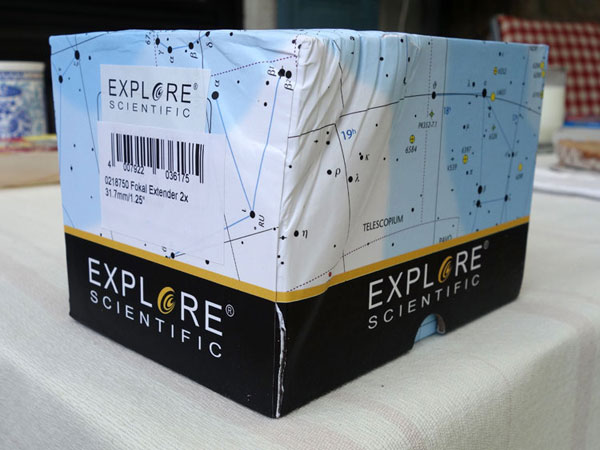 |
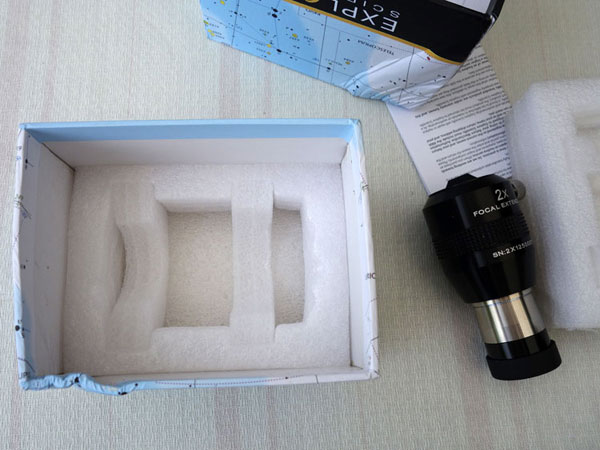 |
Photos: The "crumpled" box of the focal extender
I notified Explore Scientific of this issue, but did not ask for an exchange. I got a voucher of 4.95 EUR and used it when I ordered a 3 x focal extender from them soon after - so to speak without shipping cost thanks to the voucher.
Admittedly, I did not use the focal extenders a lot, because they provided some bulk and introduced additonal complexity. But after I had bought an Omegon PS 72/432 refractor, I found out that the 3x focal extender was very useful for taking photos of the moon using the 32 mm DigiScope eyepiece and this extender. I also found that 5 x focal extenders were used in conjunction with wide-field refractors. So I finally also ordered the 5 x focal extender in December 2018.
Note: Like Barlow lenses, focal extenders move the focus point outward. This can be relevant in the case that a camera does not come into focus, which is often the case with telescope tubes that are primarily designed for visual observation.
Look (2 x Extender)
Look (3 x Extender)
Look (5 x Extender)
Look (all Extenders)
Eyepiece Data without and with Focal Extenders
The following table shows for my current eyepieces, which magnifications can be achieved with my current telescopes without and with the two focal extenders:
| Telescope | Telescope Focal Length (mm) |
Extender | Eyepiece Focal Length (mm) |
Max. useable Magnification (1.5/2) |
|||||
4 |
7 |
10 |
16 |
24 |
32 |
||||
Magnification |
|||||||||
| Heritage 100P* | 400 |
--- | 100.00 |
57.14 |
40.00 |
25.00 |
16.67 |
12.50 |
150/200 |
| PS 72/432 | 432 |
108.00 |
61.71 |
43.20 |
27.00 |
18.00 |
13.50 |
108/144 |
|
| Explorer 150PDS* | 750 |
187.50 |
107.14 |
75.00 |
46.88 |
31.25 |
23.44 |
225/300 |
|
| Skymax-102* | 1300 |
325.00 |
185.71 |
130.00 |
81.25 |
54.17 |
40.63 |
204 |
|
| Skymax-127 | 1500 |
375.00 |
214.29 |
150.00 |
93.75 |
62.50 |
46.88 |
254 |
|
| Heritage 100P* | 400 |
2 x | 200.00 |
114.29 |
80.00 |
50.00 |
33.33 |
25.00 |
150/200 |
| PS 72/432 | 432 |
216.00 |
123.43 |
86.40 |
54.00 |
36.00 |
27.00 |
108/144 |
|
| Explorer 150PDS* | 750 |
375.00 |
214.29 |
150.00 |
93.75 |
62.50 |
46.88 |
225/300 |
|
| Skymax-102* | 1500 |
650.00 |
371.43 |
260.00 |
162.50 |
108.33 |
81.25 |
204 |
|
| Skymax-127 | 1300 |
750.00 |
428.57 |
300.00 |
187.50 |
125.00 |
93.75 |
254 |
|
| Heritage 100P* | 400 |
3 x* | 300.00 |
171.43 |
120.00 |
75.00 |
50.00 |
37.50 |
150/200 |
| PS 72/432 | 432 |
324.00 |
185.14 |
129.60 |
81.00 |
54.00 |
40.50 |
108/144 |
|
| Explorer 150PDS* | 750 |
562.50 |
321.43 |
225.00 |
140.63 |
93.75 |
70.31 |
225/300 |
|
| Skymax-102* | 1300 |
975.00 |
557.14 |
390.00 |
243.75 |
162.50 |
121.88 |
204 |
|
| Skymax-127 | 1500 |
1125.00 |
642.86 |
450.00 |
281.25 |
187.50 |
140.63 |
254 |
|
| Heritage 100P* | 400 |
5 x* | 500.00 |
285.71 |
200.00 |
125.00 |
83.33 |
62.50 |
150/200 |
| PS 72/432 | 432 |
540.00 |
308.57 |
216.00 | 135.00 |
90.00 |
67.50 |
108/144 |
|
| Explorer 150PDS* | 750 |
937.50 |
535.71 |
375.00 |
234.38 |
156.25 |
117.19 |
225/300 |
|
| Skymax-102* | 1300 |
1625.00 |
928.57 |
650.00 |
406.25 |
270.83 |
203.13 |
204 |
|
| Skymax-127 | 1500 |
1875.00 |
1071.43 |
750.00 |
486.75 |
312.50 |
234.38 |
254 |
|
Red: Above maximum usable magnification; magenta: above maximum usable magnification for Newtonians; bold: for photography
*) I do no longer own the telescope/extender
Obviously, the focal extenders, particularly the 3 x and 5 x extender, make little sense for the Skymax tubes...
Here is a reduced table for my Omegon PS 72/432 refractor which I use on vacation and for photography using the projection method:
| Telescope | Telescope Focal Length (mm) |
Extender | Eyepiece Focal Length (mm) |
Max. useable Magnification (1.5/2) |
|||||
4 |
7 |
10 |
16 |
24 |
32 |
||||
Magnification |
|||||||||
| PS 72/432 | 432 |
--- | 108.00 |
61.71 |
43.20 |
27.00 |
18.00 |
13.50 |
108/144 |
| PS 72/432 | 432 |
2 x | 216.00 |
123.43 |
86.40 |
54.00 |
36.00 |
27.00 |
108/144 |
| PS 72/432 | 432 |
3 x* | 324.00 |
185.14 |
129.60 |
81.00 |
54.00 |
40.50 |
108/144 |
| PS 72/432 | 432 |
5 x* | 540.00 |
308.57 |
216.00 | 135.00 |
90.00 |
67.50 |
108/144 |
*) I do no longer own the extender
First Experiences
In the following, I present sample pictures taken with the Explore Scientific Focal Extender 2 x, the Revelation Barlow lens 2 x, and the Sky-Watcher Barlow lens 2 x (under unfavorable conditions, camera Ricoh GR held to the eyepiece). These photos should not be taken too seriously, but they provide a certain impression of the different performances of the three focal extenders. The Sky-Watcher Barlow lens 2 x is especially sensitive to stray light and shows the strongest color fringing. With the Explore Scientific Focal Extender 2 x, I could not find any color fringing. The Revelation Barlow lens is in the midfield, but I also found it not good enough for using it in the past ...
The Sky-Watcher Heritage 100P used in these tests was actually beyond the maximum usable magnification (200 x instead of 150 x) when used with the 4 mm UWA eyepiece. The following photos are unprocessed!
Comparison of the Magnification without Extender, with 2x and with 3 x Extender
The following photos are meant to give an impression of the achievable magnification with the 2 x and 3 x extenders (not of the achievable image quality). They were also taken with the Sky-Watcher Heritage 100P and the Ricoh GR:
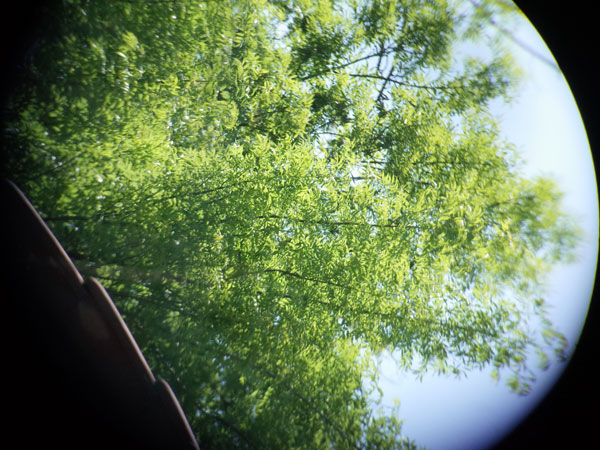 |
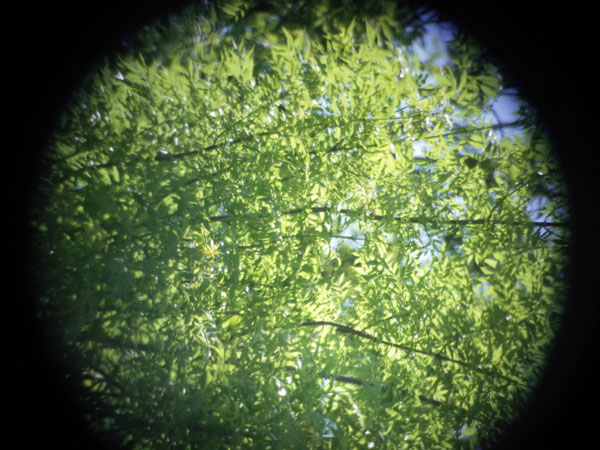 |
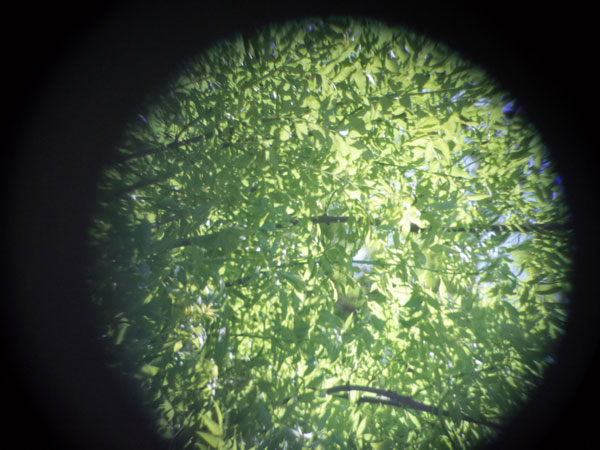 |
||
24 mm WA eyepiece at Heritage 100P |
Explore Scientific Focal Extender 2 x, 24 mm WA eyepiece |
Explore Scientific Focal Extender 3 x, 24 mm WA eyepiece |
Comparison of the Magnification without Extender, with 2x, 3 x, and 5 x Extender
The following photos from December 2018 should provide an impression of the achievable magnification with the 2 x-, the 3 x and the 5 x-Extender (not of the achievable image quality). They were taken with the Omegon 72/432, the 32 mm DigiScope eyepiece and the Sony RX100 M4 attached to it (projection method):
*) Abschätzung des Vergrößerungsfaktors anhand des rechten geschlossenen Fensters:
| Factor | 1 x |
2 x |
3 x |
5 x |
| Calculated | --- |
548 Px |
822 Px |
1370 Px |
| Measured | 274 Px |
545 Px |
834 Px |
1425 Px |
Due to the weather conditions, focusing was difficult using the 3 x and especially the 5 x extender. The sharpness achieved should not be taken too seriously here. Nevertheless, I have the feeling that the sharpness achieved with the 5 x extender is lower.
Photo: Camera attached to the 32 mm eyepiece and 5 x focal extender
Weight
The Explore Scientific Focal Extender 2 x, 3 x, and 3 x version weigh 258 g, 245 g und 280 g (223 g, 254 g, and 263 g according to my kitchen scales) and are therefore a problem for light telescopes such as the Sky-Watcher Heritage 100P (given away).
Moving the Focus Point Outward
I used the Explore Scientific Focal Extender 2x to move the focus point outward on my Heritage 100P telescope so that I was able to get sharp images with the Atik Infinity camera and this telescope. Without this, the camera did not come into focus. At the same time, this doubles the focal length, in this case from 400 mm to 800 mm. However, this also has the disadvantage that the light intensity is reduced by two stops, so that you need 4 times longer exposure times. I present four edited versions of the very first photos I took with this combination (I did not make any further attempts in this direction because of the poor results):
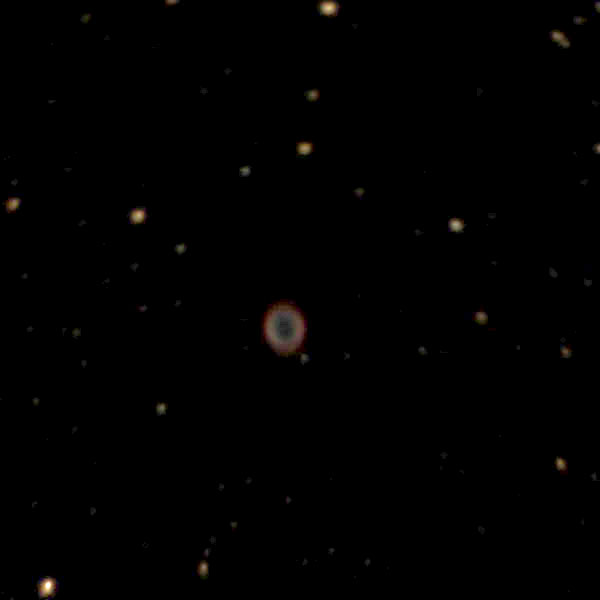 |
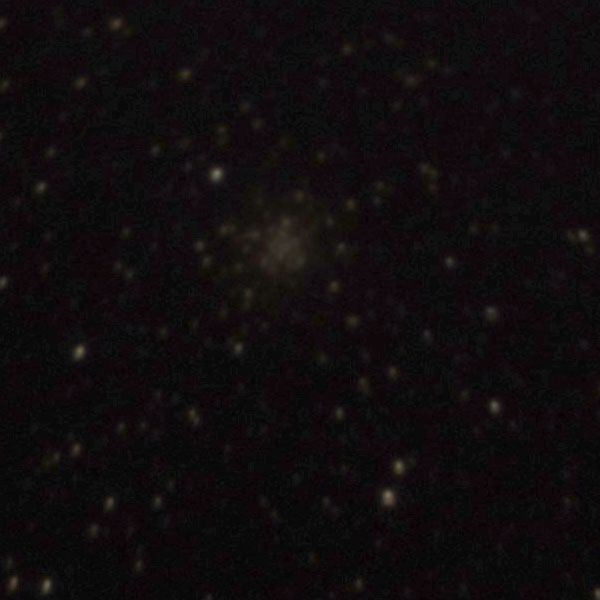 |
|
M 57 (Ring Nebula in Lyra) |
M 56 (Lyra) |
|
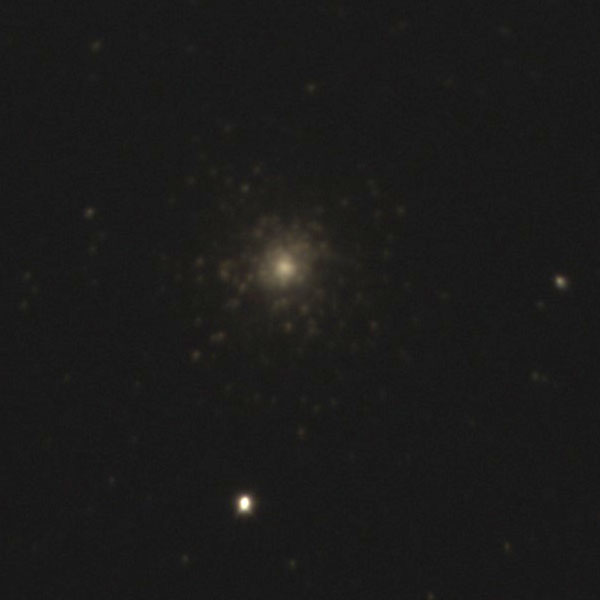 |
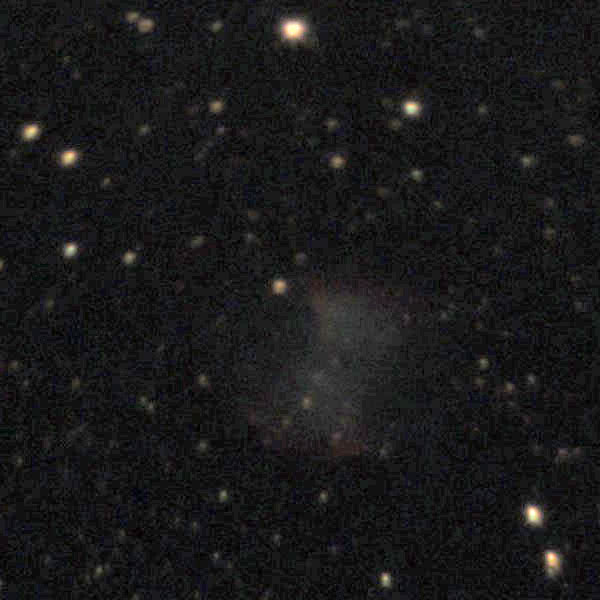 |
|
M 15 (Pegasus) |
M 27 (Dumbbell Nebula in Vulpecula) |
First Conclusions
My first impression of the Explore Scientific Focal Extender 2 x is very good. Surely one cannot expect miracles, and "real" eyepieces with the corresponding magnifications will certainly give better results than the equivalent combinations with the extender. But as a "start," extenders are a good and not too expensive solution. Very first impressions of the 3 x extender seemed to indicate that it does not perform quite as well as the 2 x extender (which does not come as a surprise to me...), but when I checked both extenders at the moon (nearly half moon), the 2 x with an 16 mm UWA eyepiece, and the 3 x with a 24 mm WA eyepiece, I could not find any significant differences (the same accounts for the 7 mm UWA eyepiece without extender; however, this magnifies a little more in comparison to the two other configurations).
When I look at the technical data of my current eyepiece (see above), I have, however, to admit that my eyepiece set does not have clear gaps (see elsewhere) and that therefore the purchase of the focal extenders was not really necessary...
So there is still the use of the focal extenders to take photos with the 32 mm DigiScope eyepiece according to the projecton method. Here, the 3 x extender has already proven itself (the 2x extender offers too little magnification). For example, I was able to photograph the Schröter valley on the moon with it. For the 5 x extender, there are no results available.
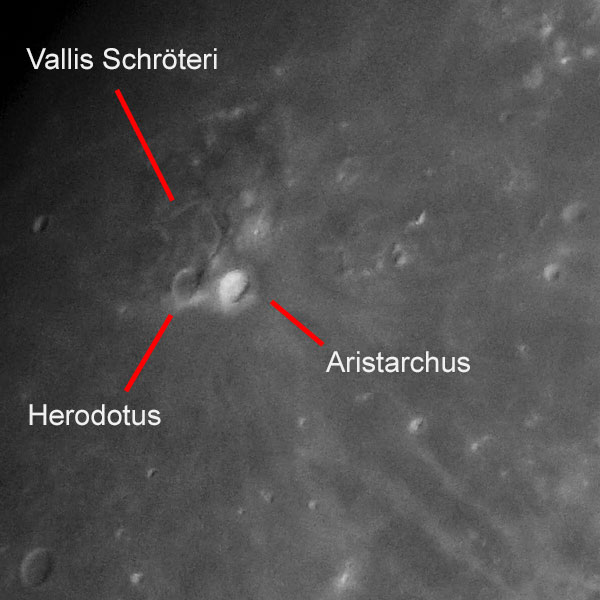 |
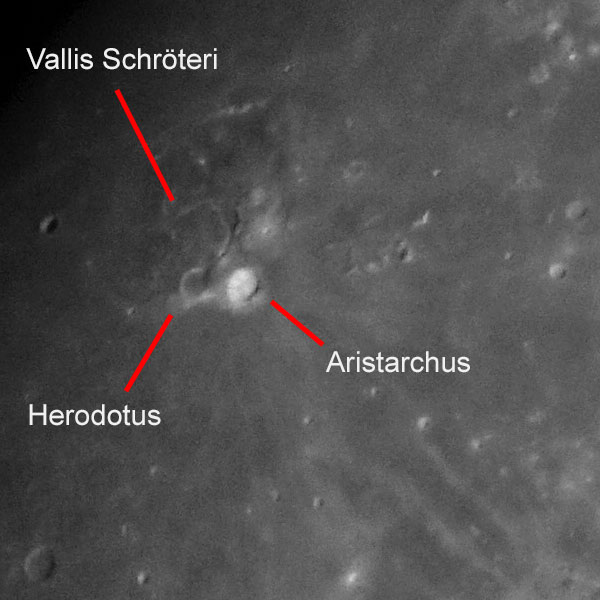 |
 |
Photos: Vallis Schröteri (photo data: November 20, 2018, Omegon PS 72/432 refractor on Sky-Watcher AZ Pronto mount, Sony RX100 M4 attached to the 32 mm eyepiece, 3 x ES focal extender)
The focal extenders also make it possible to move the focus point outward so that the Atik Infinity camera can be used at the Heritage 100P telescope. Very first attempts showed that the 2x extender achieves the desired effect, but I do not know yet, whether I will use this technique in the long term, because the results are not satisfying...
Update: I no longer own the Heritage 100P, so the above considerations
are no longer relevant. However, they might still be valid for my newly acquired
PS 72/432 refractor.
Update: I sold my Explore Scientific Focal Extender 3 x in November 2022 and the Focal Extender 5 x and 2 x in December 2022. I therefore can no longer report any experiences with these focal extenders.
References
- EXPLORE SCIENTIFIC 1.25" 2X FOCAL EXTENDER (USA): explorescientificusa.com/collections/focal-extenders/products/1-25-focal-extender
- EXPLORE SCIENTIFIC 1.25" 3X FOCAL EXTENDER (USA): explorescientificusa.com/collections/focal-extenders/products/1-25-3x-focal-extender
- EXPLORE SCIENTIFIC 1.25" 5X FOCAL EXTENDER (USA): explorescientificusa.com/collections/focal-extenders/products/1-25-5x-focal-extender
- EXPLORE SCIENTIFIC Tele extender 2x 31.7mm/1.25": www.explorescientific.co.uk/en/Eyepieces/Fokal-Extender-2x-31-7mm-1-25.html?force_sid=1cacd33b198f75fb42704f07a6d50ace&_ga=2.22254206.457994657.1495375286-312407702.1458939234
- EXPLORE SCIENTIFIC Tele extender 3x 31.7mm/1.25": www.explorescientific.co.uk/en/Eyepieces/Fokal-Extender-3x-31-7mm-1-25.html?force_sid=763a637d2d6b88518ceb13ab285146d1&_ga=2.13627447.161251290.1495623817-312407702.1458939234
- EXPLORE SCIENTIFIC Tele extender 5x 31.7mm/1.25": www.explorescientific.co.uk/en/Eyepieces/Fokal-Extender-5x-31-7mm-1-25.html?force_sid=763a637d2d6b88518ceb13ab285146d1&_ga=2.13627447.161251290.1495623817-312407702.1458939234
- Forum post (gregory93): Just ordered an ES x2 barlow! (www.cloudynights.com/topic/445997-just-ordered-an-es-x2-barlow/)
- Forum post (EuropaWill): Explore Scientific 2" 2x Focal Extender causes Vignetting? (www.cloudynights.com/topic/483524-explore-scientific-2-2x-focal-extender-causes-vignetting/)
- Forum post (lamplight): Powermate vs the ES focal extender (www.cloudynights.com/topic/433790-powermate-vs-the-es-focal-extender/)
| 05.03.2023 |

